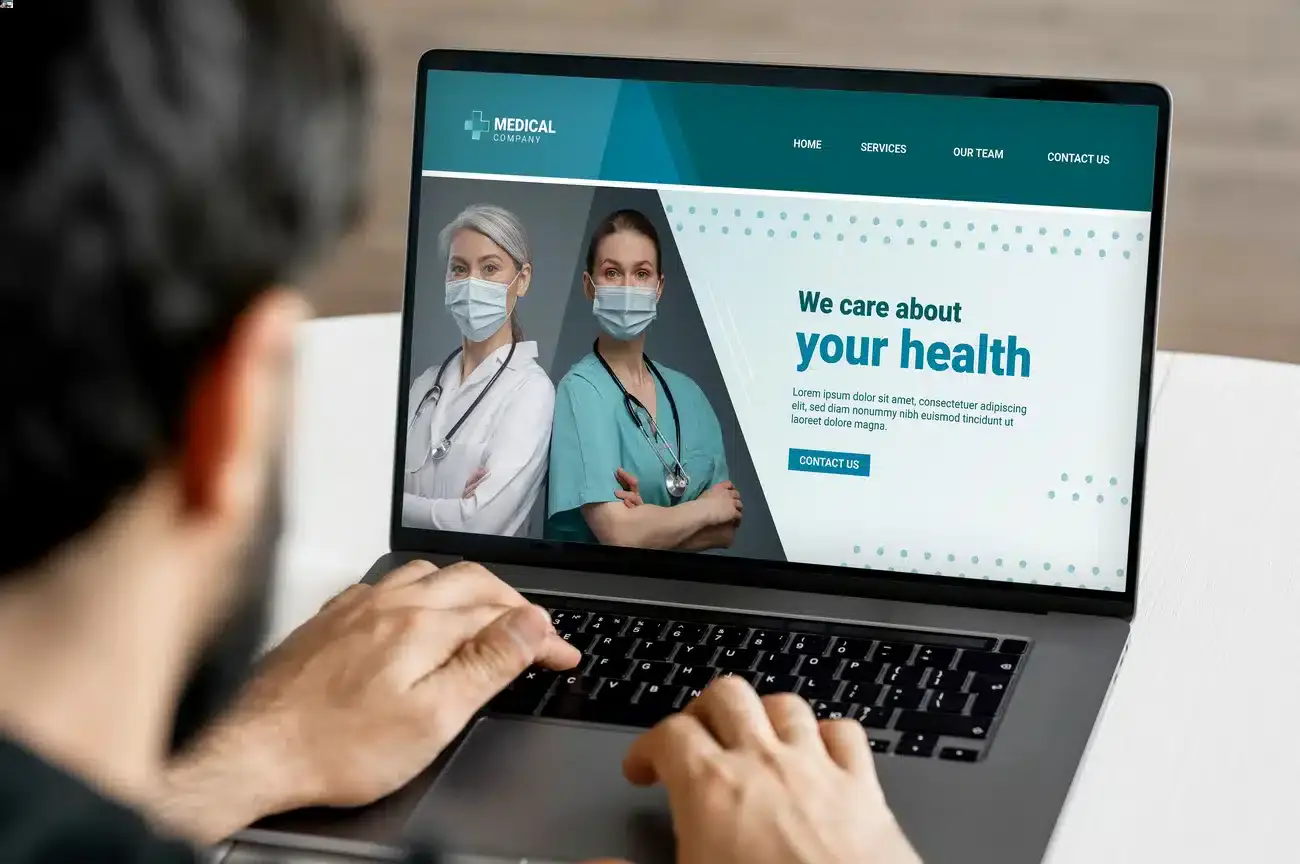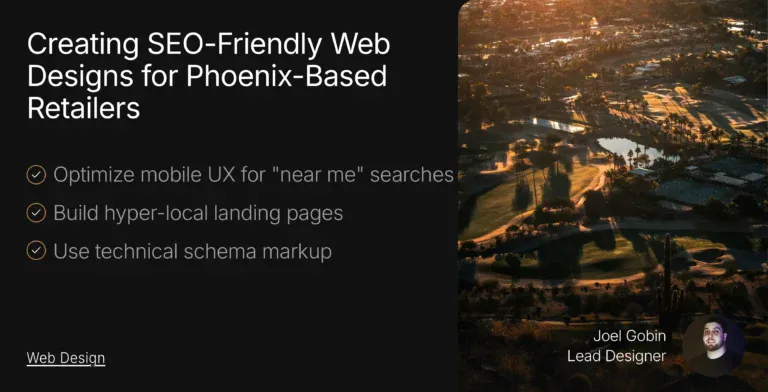Statistics show that 58.5% of adults search for health information online.
However, patient portals attract only 30% of consumers.
Healthcare websites often struggle to offer simple, patient-focused digital experiences. Patient-centric healthcare websites have become essential today.
About 80% of adults aged 65 and older live with at least one chronic condition.
A patient-focused approach delivers more than an attractive design. It creates customized experiences that equip patients to make informed health decisions and build trust between patients and providers.
Digital solutions and traditional care have merged into a new standard. Your website now acts as a vital extension of your healthcare services. This piece guides you through building a healthcare website that puts patient needs first—from goal setting to features that support actual patient experiences.
Want a custom healthcare website but don’t know where to start? Let us help.
Define Your Patient-Centric Goals
Your healthcare website needs clear, patient-focused goals that match your organization’s mission. Healthcare has moved away from fee-for-service toward outcome-based care.
Providers now earn rewards by raising standards and showing evidence-based service results. This change needs careful planning about what putting patients first means for your organization.
Clarify what Patient-Centricity Means for your Organization
Being patient centric is more than just a a trend. It shows your dedication to making patients the focus of all healthcare choices.
Research shows patient-centered care values patients’ priorities and needs. It uses a complete health view instead of just medical facts and builds strong bonds between patients and doctors.

Your website’s patient-centric approach should include these basic elements:
Respect for individual values: Your website must see each patient as unique, with specific health needs, priorities, and life situations.
- Collaboration: Your digital platform should help patients, families, and providers work together during care.
- Information sharing: Quick and complete information helps patients make smart choices.
Research shows that patient-centered care leads to better health and care results. This includes improved survival rates.
Your website should create digital experiences that value patients’ time, abilities, and right to make decisions.
Patient centricity helps move healthcare from doctor-controlled to patient-focused care. Studies show patients who take part in their health journey have better treatment success. This works especially well with ongoing conditions like diabetes and high blood pressure.
Set Measurable Outcomes for Patient Experience and Access
Once you define patient centricity, create clear ways to measure success.
CAHPS (Consumer Assessment of Healthcare Providers and Systems) surveys give great insights into how patients view their healthcare. These patient reports show what matters most to them—details that only patients can share.
Your website should have SMART goals:
Specific: Focus on the exact parts of patient experience.
- Measurable: Use numbers to track progress.
- Attainable: Set goals you can reach based on current results.
- Realistic: Match goals to your resources and time.
- Timely & Tangible: Set clear deadlines.
Your website could aim to “cut appointment scheduling time by 30% within three months through self-scheduling,” for example.
Track your website’s patient experience through care quality markers. Look at how well you communicate, show respect, and give emotional support.
Patient satisfaction shows if your care meets their needs and hopes.
Clear, measurable goals for patient experience and access turn your website into a powerful tool. It becomes more than just a digital brochure for your services.
Plan Your Website Structure and Content
Healthcare websites need careful planning and a deep understanding of patient interactions with your digital platform. Your healthcare website will succeed when you place patient needs first through thoughtful organization and available content.
Map the Patient Journey to Identify Key Touchpoints
Patient journey mapping should be your first step when planning your website structure. This process tracks all interactions between patients and your healthcare organization over time. A patient journey map helps you visualize how patients navigate through your healthcare system from their point of view, not yours.
Journey maps show inconsistencies and gaps that could harm patients and your healthcare system. These visual tools show how patients relate to healthcare organizations. They help you look at experiences from different angles. This process identifies vital touchpoints where patients need specific information or support.
Clinicians can help build a map of treatment steps, which you can combine with actual patient experiences. This method helps you understand patient goals throughout their healthcare experience. Multiple stakeholders, including patients and healthcare professionals, must contribute to identify potential gaps and pain points.
Decide on Core Pages and Their Purpose
Your website’s core pages come next after mapping the patient journey. Your medical website represents everything your practice values—from services to resources that help patients make informed decisions.
Most healthcare websites need these essential pages:
Homepage with quick bursts of information about your practice.
- Services pages clearly explaining treatments offered.
- Provider profiles with credentials, specialties, and patient reviews.
- Appointment booking and contact information.
- Educational resources and health information.
Each page must serve a specific purpose along with the patient experience. Educational content helps during the awareness phase, while appointment-booking tools support the action phase.
Easy navigation makes the most important difference—94% of consumers indicate that easy navigation is the most important website feature. A well-laid-out menu with clear calls to action will direct patients exactly where they need to go.
Avoid Medical Jargon and Use Plain Language
Clear language that patients understand forms the foundation of patient-focused content.
Medical jargon creates unnecessary distance between caregivers and patients. Words like “ambulate” instead of “walk” and “erythematous” instead of “red” cause misunderstandings. Patients might turn to unreliable online sources for answers when they don’t understand medical terminology, which can be misleading and risky.
Plain language doesn’t mean “dumbing down,” but communicating clearly and directly. Clear communication enables better healthcare decisions.
Note that clear language improves communication, makes content available to diverse audiences, and promotes trust between a brand and its audience. This approach becomes particularly important when explaining diagnoses, medications, or treatment plans.
Design for Accessibility and Usability
Patient centric healthcare websites must be available to everyone. Studies show that one in four Americans has a disability, yet many healthcare platforms don’t meet simple accessibility standards. Websites that ignore these users exclude much of the population and miss a chance to show true patient centricity in healthcare.
Follow WCAG Guidelines for Inclusive Design
Web Content Accessibility Guidelines (WCAG) set internationally recognized standards for web accessibility. These guidelines will give your healthcare website the foundations of inclusivity. WCAG 2.1 outlines how to make web content available to people with various disabilities. This includes visual, auditory, physical, speech, cognitive, language, and learning disabilities.
Healthcare organizations must know that WCAG compliance isn’t just best practice—it’s becoming law. Section 508 of the Rehabilitation Act and the Americans with Disabilities Act (ADA) require healthcare websites to offer equal access to information and communication technology. Healthcare websites must meet WCAG AA standards by May 2026.

These guidelines come to life through practical steps. Alternative text for images lets screen readers describe visual content to users with visual impairments. High-contrast color schemes help elderly users and those with low vision read content better. WCAG suggests a minimum color contrast ratio of 4.5:1 for normal text and 7:1 for larger text.
Keyboard navigation matters greatly. Many patients with mobility disabilities use only keyboards to explore websites. Every interactive element should work without a mouse, following a logical tab order throughout the site.
Use Mobile-First Responsive Layouts
Mobile devices generate more than half of global website traffic. These numbers show why healthcare websites need a mobile-first design approach.
Mobile-first design starts with the smallest screens first. This approach puts essential information front and center. It helps arrange content based on patient needs, matching patient-centric principles naturally.
Effective mobile design includes:
Large, touch-friendly buttons for all finger sizes.
- Simple navigation with minimal scrolling.
- Quick access to appointments and contact details from the homepage.
- Forms that work well on small screens with less typing.
Mobile experience shapes patient satisfaction directly. Research shows 92.3% of internet users visit websites through mobile phones. A responsive site that works well across devices shows respect for patients’ time and priorities—the heart of patient-centric care.
Want a custom healthcare website that is mobile friendly? Let us help.
Integrate Features that Support Patient Needs
Your healthcare website needs a good user experience with practical features that address real patient needs once you have built a strong foundation. Twenty percent of U.S. residents speak a language other than English at home. This fact shows how feature choices directly affect accessibility and usability for patients from different backgrounds.
Add Appointment Booking and Provider Search
The way patients connect with healthcare providers has changed thanks to online appointment scheduling. Studies reveal that most consumers prefer websites in their native language, which makes accessibility crucial when adding these features. Patients can now book appointments anytime without making phone calls and see your calendar’s availability right away.
Online booking does more than just make things convenient. Your schedule stays full day and night as patients can book through your website, social media profiles, and Google listings. Automatic reminders help cut down on no-shows, which many healthcare organizations don’t deal with very well.
A good provider search helps patients quickly find the right doctor. Research shows that 94% of consumers say easy navigation matters most when looking up healthcare information. Your provider search should have:
Filtering options by specialty, location, and insurance acceptance.
- Detailed provider profiles with credentials and specialties.
- Immediate availability indicators.
- Geolocator widgets that help patients find their nearest clinic.
Advanced systems let patients book with the next available qualified professional. This helps reduce wait times across your practice.
Include Multilingual Support and Translation Tools
One in five U.S. residents speaks a language other than English at home, and this number keeps growing. More than 30% of the population speaks another primary language in six states—California, New Mexico, Texas, New Jersey, Nevada, and New York.
Professional translation turns your healthcare website into a welcoming digital front door. Nine out of ten users choose websites in their native language when they can, even if they know English. Your website should meet this need through well-planned language options.
Healthcare content needs more than just machine translation. The facts are clear: “No computer can match the mastery of a qualified human translator.” Medical terms must be precise, which automated systems can’t guarantee. Work with medically qualified linguists who understand healthcare terminology and can translate critical information accurately.
Start by translating the most important content—appointment booking interfaces, service descriptions, and accessibility information. Your site must follow rules like Section 1557 of the Affordable Care Act. This law requires translated taglines in each state’s top 15 languages, along with non-discrimination notices.
Cultural differences matter beyond just translation. Your website might need adjusted messaging for different cultural groups in your area—professionals call this “transcreation.” This approach helps your content appeal to people from all cultural backgrounds while staying medically accurate.
Optimize for Performance and Visibility
Your healthcare website’s technical performance determines how satisfied and accessible it is to patients. The way your digital platform serves patient needs depends on performance metrics. Patient-centric optimization forms the foundation of success.
Improve Page Speed and Uptime Reliability
Your healthcare website’s speed affects how patients interact with it. Visitors lose focus on pages that take longer than 0.3 seconds to load. Pages loading within 3 seconds get the best conversion rates.
Loading times between 6-9 seconds make conversion rates drop by 61%. This matters a lot because 82% of patients browse medical websites on their mobile devices.
Speed optimization techniques include:
Image compression and resizing keeps quality high while making files smaller.
- Minifying CSS/JavaScript files removes unnecessary characters.
- Enabling browser caching lets browsers store static files quickly.
- Implementing a Content Delivery Network (CDN) serves content from the closest servers.
Uptime reliability is vital for healthcare websites. Medical standards follow Uptime Institute’s Tier III standard, which requires 99.982% uptime. This allows only 1.6 hours of downtime each year.
Doctors need medical data immediately, so outages create serious problems.
Use Local SEO to Reach Patients Searching for Care
Local SEO helps patients find the healthcare information they need. Your website becomes easier to find when you use proper SEO strategies. Patients trust healthcare providers more when they appear higher in search rankings.
Healthcare SEO works best when you use medical terms that patients search for.
Local keywords attract people looking for healthcare in their area. Mobile optimization matters because most health-related searches happen on phones.
Quality content about common health issues helps answer patient questions. Search results look better with optimized meta titles and descriptions, which lead to more clicks.
Your Google My Business profile needs regular updates with correct information to stay visible locally.
Your healthcare website serves patients better through improved performance and visibility. This ensures they can access information exactly when they need it.
Get a Patient Centric Healthcare Website with Blacksmith
Your healthcare website acts as the digital front door to your services. Patient centricity isn’t just a nice feature – it’s crucial.
That being said, getting a custom website that covers all the points mentioned above can be difficult and time-consuming.
Don’t worry, here at Blacksmith we’re dedicated to creating healthcare websites that are engaging and stand the test of time.
With our healthcare web design services, you’ll get a team of seasoned web designers ready to apply all the modern strategies that’ll help your healthcare website stand out.
All while making it easy for patients to understand what to do and where to go when navigating through it.
Still unsure if this is what your healthcare company needs? Click here to schedule a call with us so we audit your brand and show you where you could improve and how a brand new website could make 2025 your best year yet.









